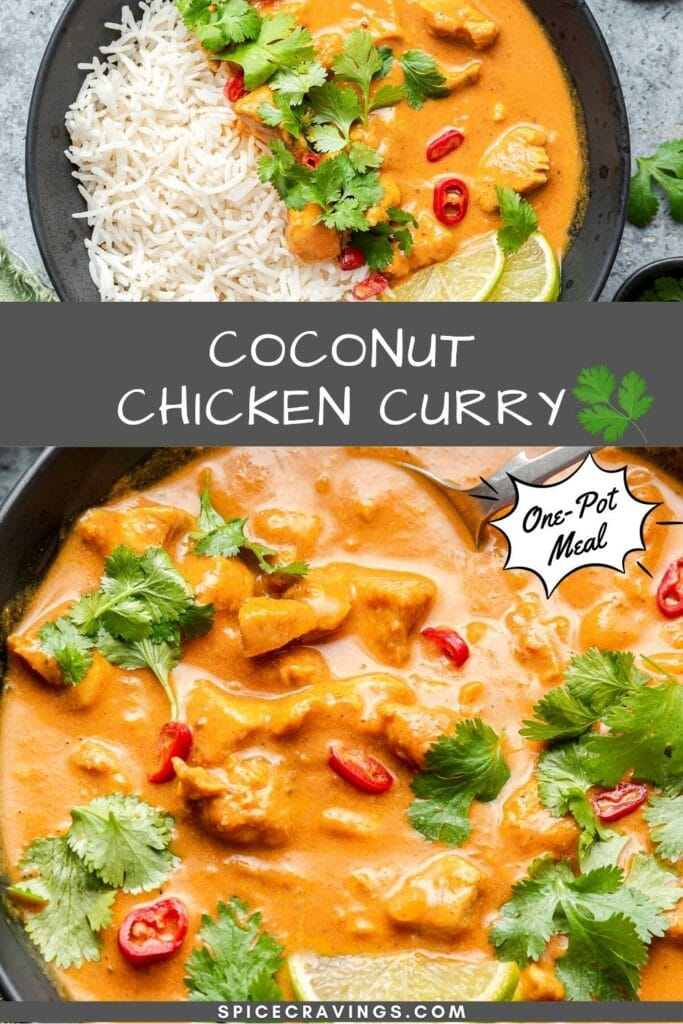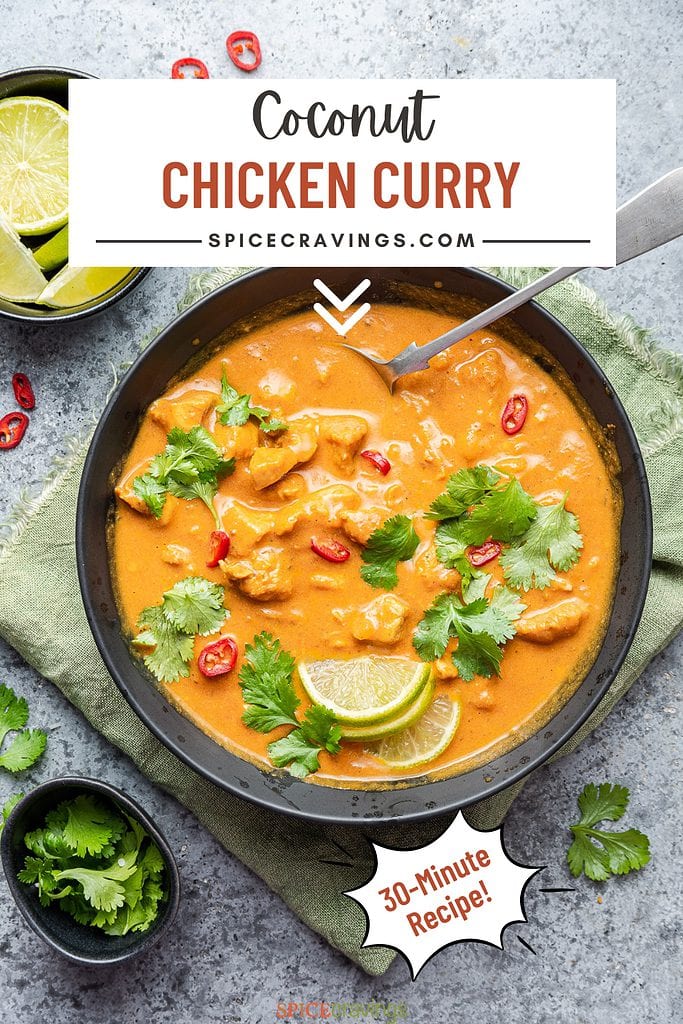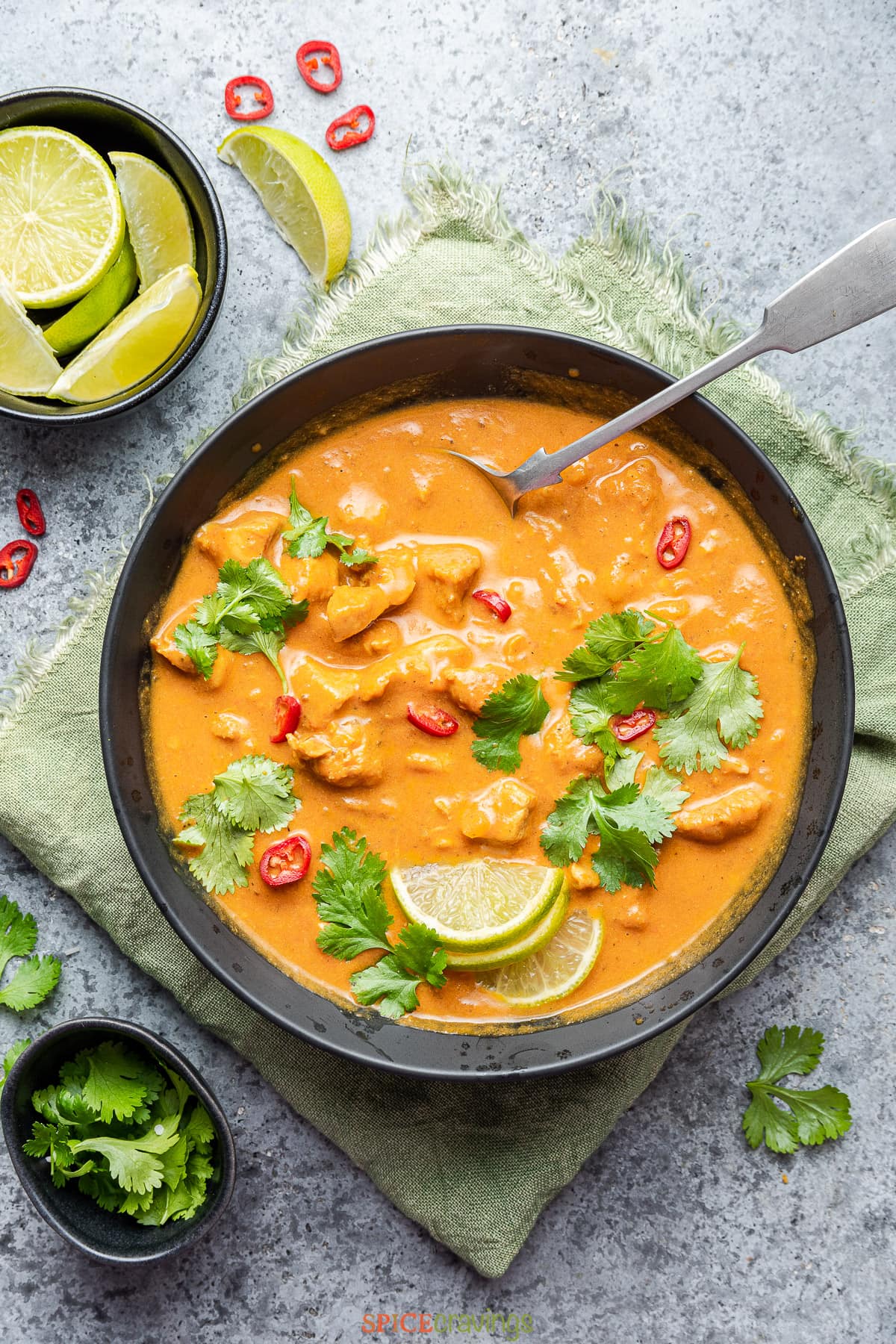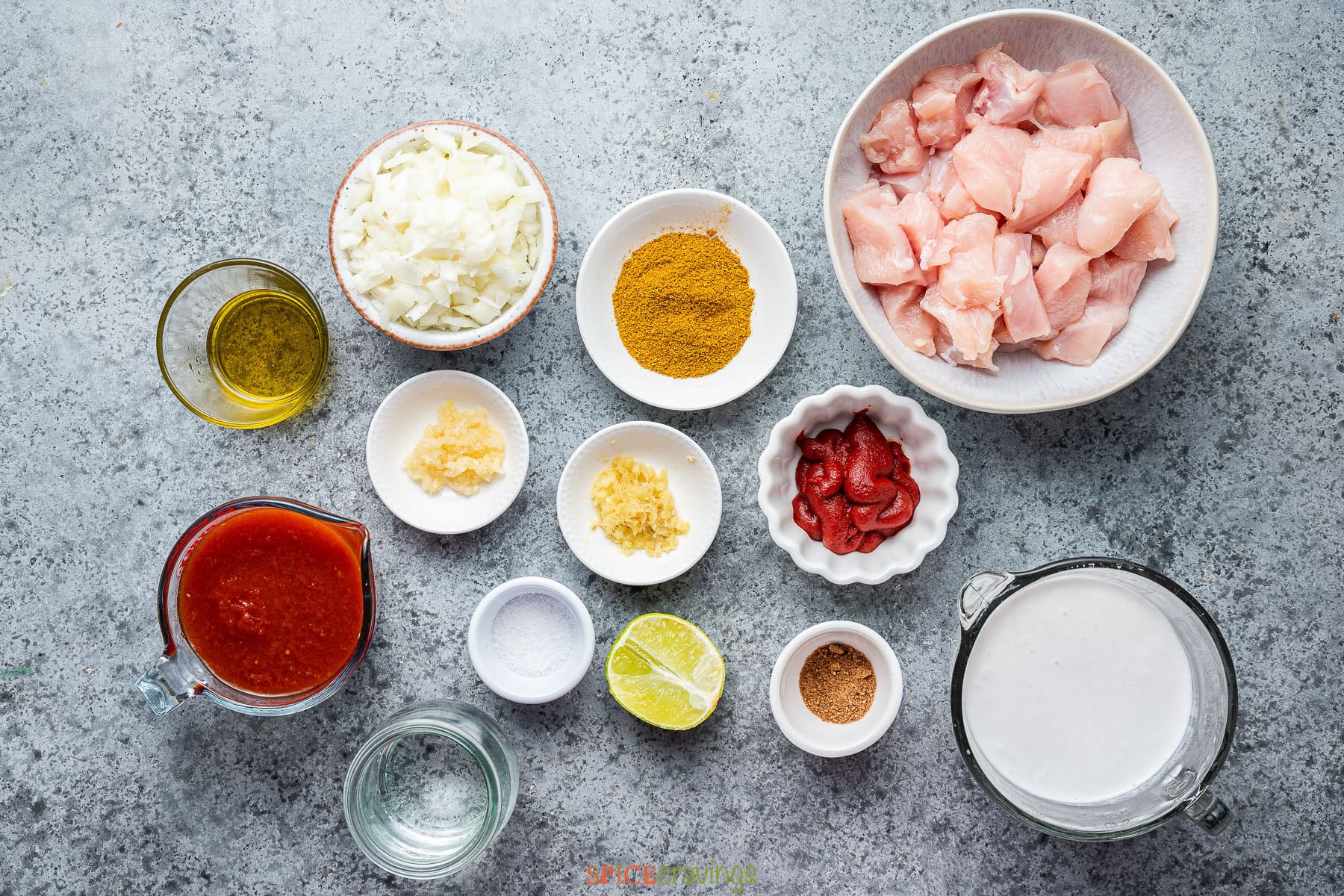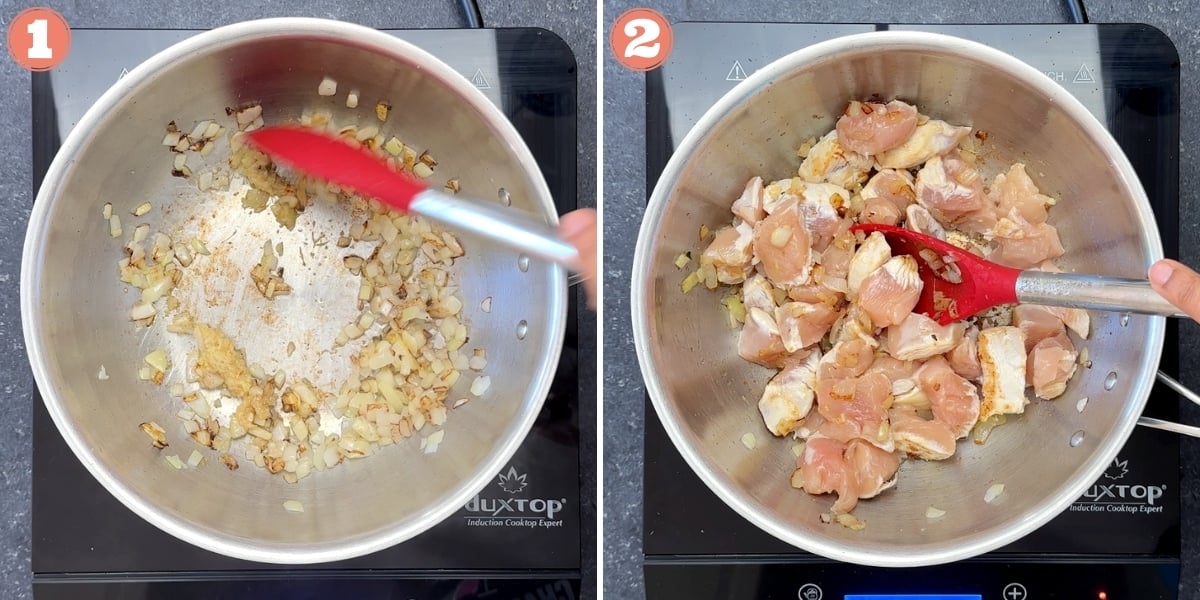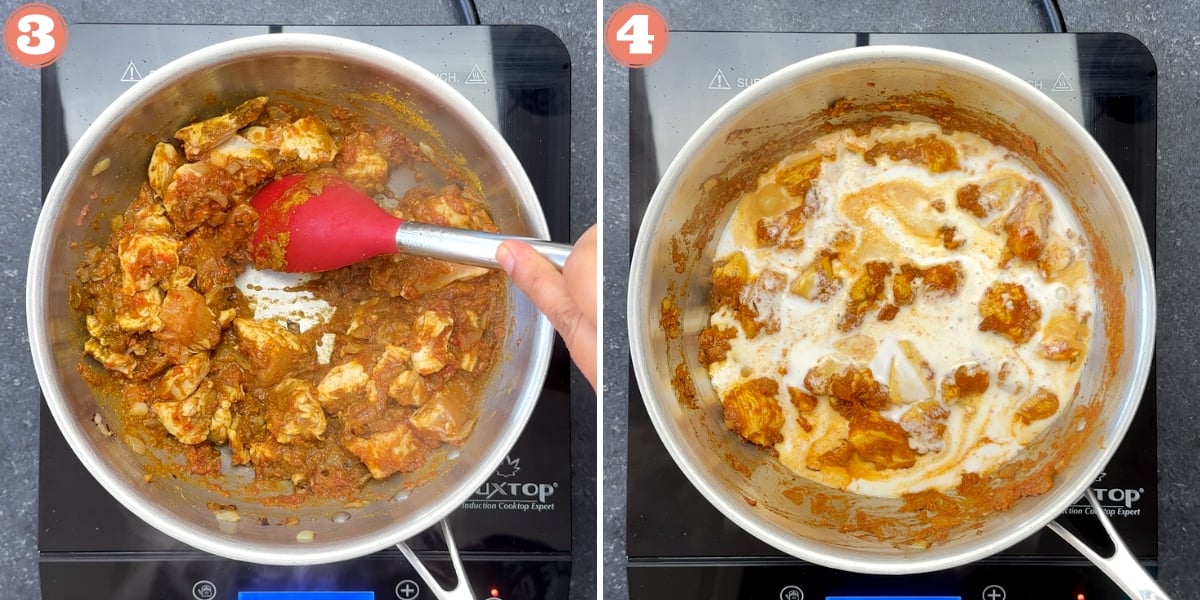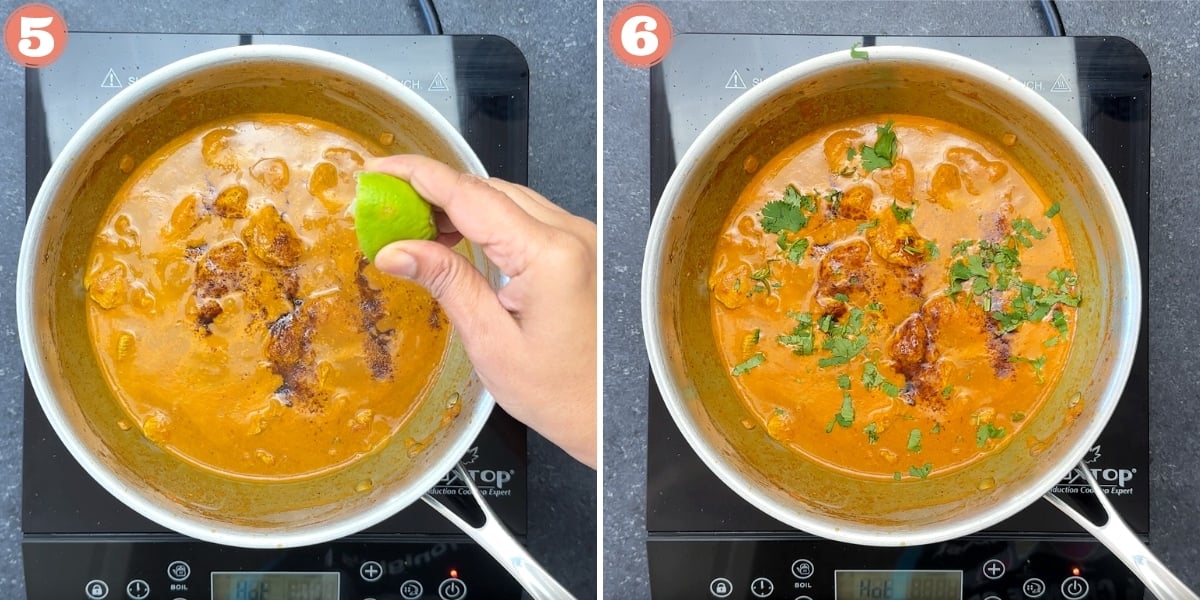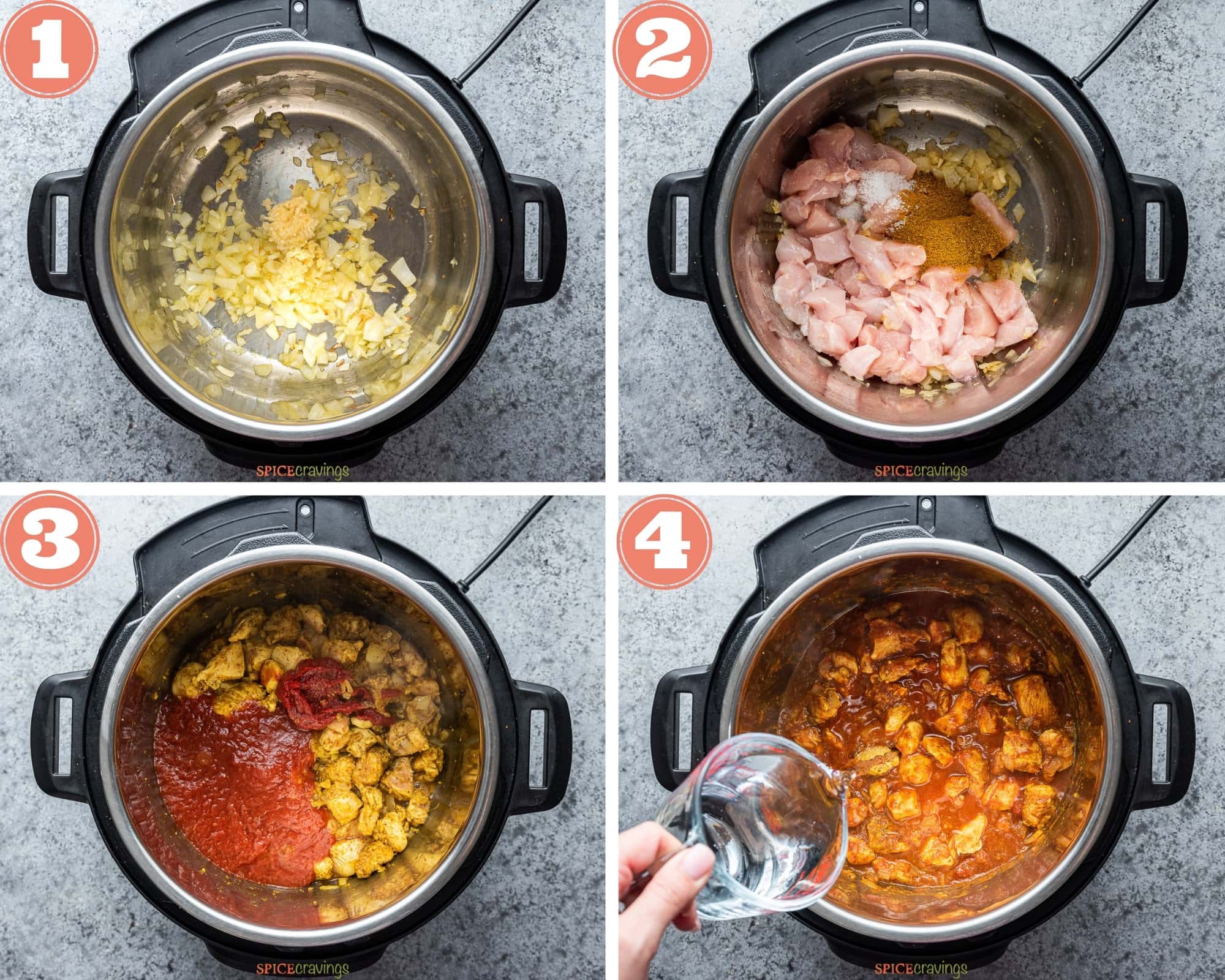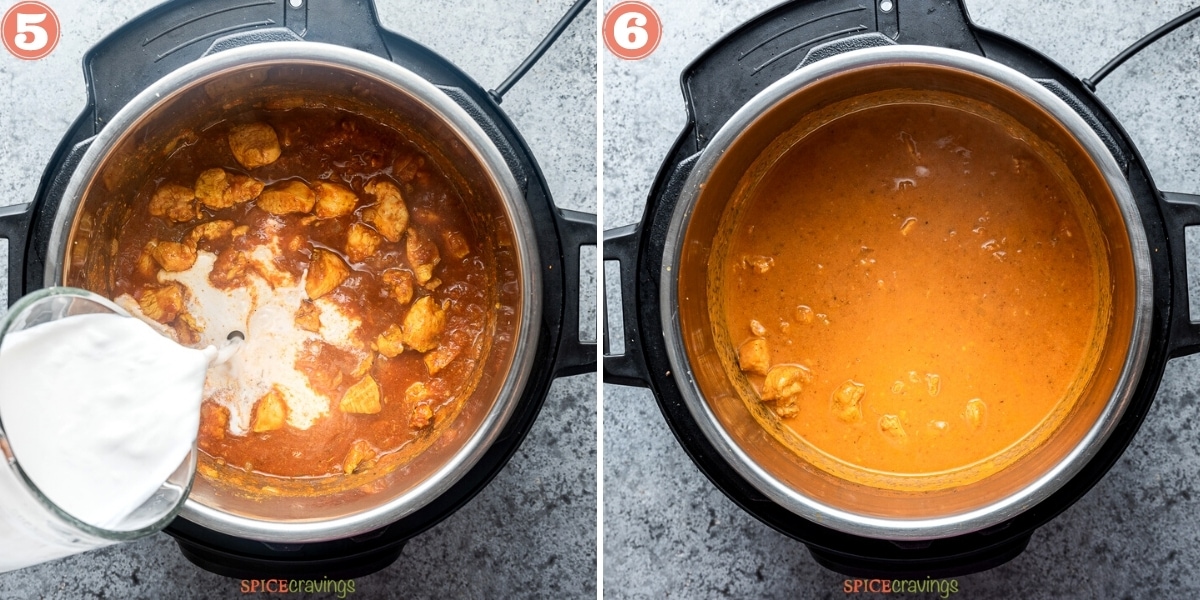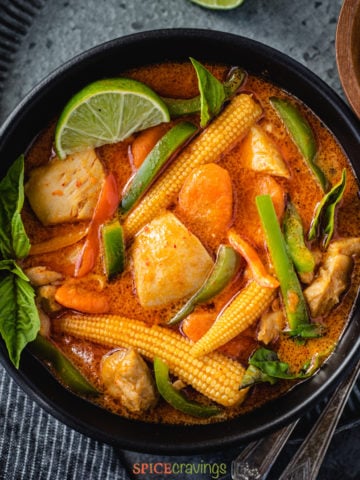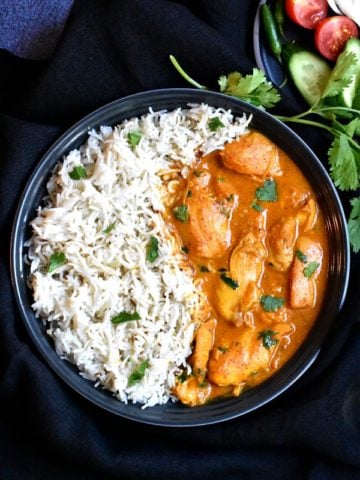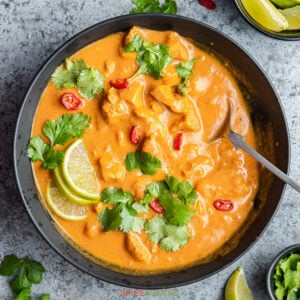Serve chicken coconut curry over basmati or jasmine rice, or make it low-carb with cilantro lime cauliflower rice. I like to think of this coconut curry chicken recipe as a one-stop shop to my pantry.
This is one of those easy weeknight dinners you can have on the table in 30 minutes, and it takes great use of items hanging about in your pantry and fridge. Classic and timeless, with plenty of variations to add your own spin, it’s a beautifully golden chicken curry that’s gluten-free and low-carb!
Ingredients - Notes & Substitutions
Chicken curry with coconut milk will become your new favorite dish to make at home thanks to its incredible use of pantry staples. Here’s a quick glance at what we need:
Olive Oil: to add richness and body. Coconut oil or ghee will also work.Aromatics: a savory base of onions, ginger, and garlic deepens the flavor. I like to use ginger and garlic paste to save some time on prep work in the kitchen.Chicken: chicken thighs will create a richer, fattier curry as opposed to chicken breasts. Use whichever is your favorite, just make sure to cut it into bite-size pieces.Curry Powder: store-bought curry powder, either mild or hot, adds aroma, spice and heat. If you don’t have it on hand, see notes for a homemade recipe.Tomato Puree: one cup of canned tomato puree or ½ cup of canned diced tomatoes will both work. If you prefer to use fresh tomatoes, puree 2 Roma tomatoes, seeds, and all.Tomato Paste: for richness, tang, and deep red color.Water: water is needed to create a balanced sauce and to deglaze the pot so that you can pick up all those flavorful brown bits at the bottom.Coconut Milk: one whole can of full-fat coconut milk adds body, richness, and that iconic creamy consistency. Shake before opening or whiz together in a blender before mixing into the curry.Coconut Palm Sugar: optional, but a slight touch of sugar adds sweetness and balances the bitter notes of the curry powder. Honey can also be used.Lime Juice: for brightness and acidity.Garnish: cilantro or parsley are both great finishing touches. Use whichever herb you prefer.
Scroll to the recipe card for a detailed list of ingredients and quantities.
How to Make Coconut Curry Chicken
If you are wondering how to cook chicken curry with coconut milk, I have got you covered with two cooking methods - Instant Pot or Stove. Pick whichever works best for you:
Stovetop Coconut Chicken Curry Recipe
Step 1- Saute aromatics: Heat a large saucepan on medium-high heat. Add oil, and onions, and cook for 3-4 minutes. Add ginger and garlic and cook for another minute. Step 2- Saute Chicken: Add chicken pieces and saute the chicken for 2-3 minutes. Step 3- Add tomato and spices: Now add tomato puree, tomato paste, water, salt, and spices. Saute everything for another 2-3 minutes. Step 4- Cook chicken: Reduce the heat to medium, add coconut milk, and give it a stir. Cover the pan with a lid and cook for 10-12 minutes, or until the chicken cooks through. Step 5- Finish and thicken: Stir in sugar and lime juice. If you like a thicker curry, continue to simmer for 2-3 minutes. Turn off the heat when the sauce reduces to your liking. Step 6- Garnish & Serve: Garnish with chopped cilantro or parsley and serve over rice.
Instant Pot Method
Step 1. Saute aromatics: Turn on the Instant Pot on Saute mode. When hot, add oil and chopped onions. Saute onions for 3 minutes until they soften and start turning brown. Stir in ginger and garlic paste and saute for 30 seconds (Pic 1). Step 2. Saute chicken: Add the chicken pieces along with salt and curry powder. Stir and cook the chicken for 3-4 minutes (Pic 2). Step 3. Add tomato: Now add tomato puree and tomato paste and cook for another minute. Turn off the heat (Pic 3). Step 4. Deglaze the pot: Add water and use it to scrape off the brown bits stuck at the bottom (Pic 4). This prevents the ‘burn’ error in the Instant pot, so don’t skip this step. Step 5. Add coconut milk: Stir in the coconut milk (Pic 5). Close the lid and set the vent to sealing position. Step 6. Pressure cook: Cook the chicken on manual / pressure cook for 5 minutes on low pressure. When the cooking is done, wait for 5 minutes, then release the pressure manually by following your cooker’s quick-release instructions. Once the pin drops, open the lid (Pic 6). Finish the curry: If at this point the curry looks too runny, you can reduce the liquid by cooking it for 2-3 minutes on saute mode. If it looks good, stir in the sugar and fresh lime juice. Garnish and serve: Garnish with cilantro (or parsley) and serve over rice.
Serving Suggestions
To enjoy a complete meal, serve this coconut curry chicken recipe with:
Rice: Take the classic approach and serve over steamed basmati or jasmine rice, or nuttier brown rice.Low Carb: Keep it light and serve over cilantro lime cauliflower rice for a low-carb meal.Vegetable: Serve it with a side of vegetables, like air fryer broccoli or air fryer green beans.
How to Store
Leftover coconut curry chicken will keep for up to 4 days in an airtight container in the fridge. Reheating Instructions: Transfer the coconut curry sauce and chicken to an oven-safe dish. Heat in a preheated oven at 250F for 10-15 minutes. Or, reheat over medium on the stove or in 30-second increments in the microwave.
Try a Variation
Don’t have the right ingredients on hand or looking to add a personal touch? No problem! Here are some of my favorite variations: Thai Red Curry Paste: Skip the tomato paste and curry powder. Add 2-3 tablespoons red curry paste instead. Veggies: Stir in your favorite vegetables, like zucchini, carrots, potato, sweet potato, etc. Add an additional 1-2 teaspoons of curry powder. Add Shrimp: Use 1 - 1.5 lbs of frozen shrimp instead of the chicken. Reduce pressure cooking time to 3 minutes, set to low pressure.
Recipe Tips & Notes
Coconut Milk: For a creamy texture and flavor, use full-fat coconut milk. If using a low-fat version, please keep in mind that the curry will be runny and less creamy.Curry Powder Substitute: To replace curry powder, mix together 1 tablespoon ground coriander, 1½ teaspoons ground cumin, ½ teaspoon turmeric, ½ teaspoon ground cardamom, ½ teaspoon ground black pepper, and ½ teaspoon cayenne pepper.Low Pressure: Cook on low pressure to prevent coconut milk from curdling. If it does curdle, it’s not spoiled, the fat simply separated from the milk. To fix this, turn on saute and whisk it back together until smooth.Prevent ‘Burn’ Message: To prevent the unwanted ‘burn’ message, make sure to scrape the bottom of the pot after adding the water.
More Chicken Curry Recipes
These are all part of the Chicken Curry Recipes series:
📖 Recipe
